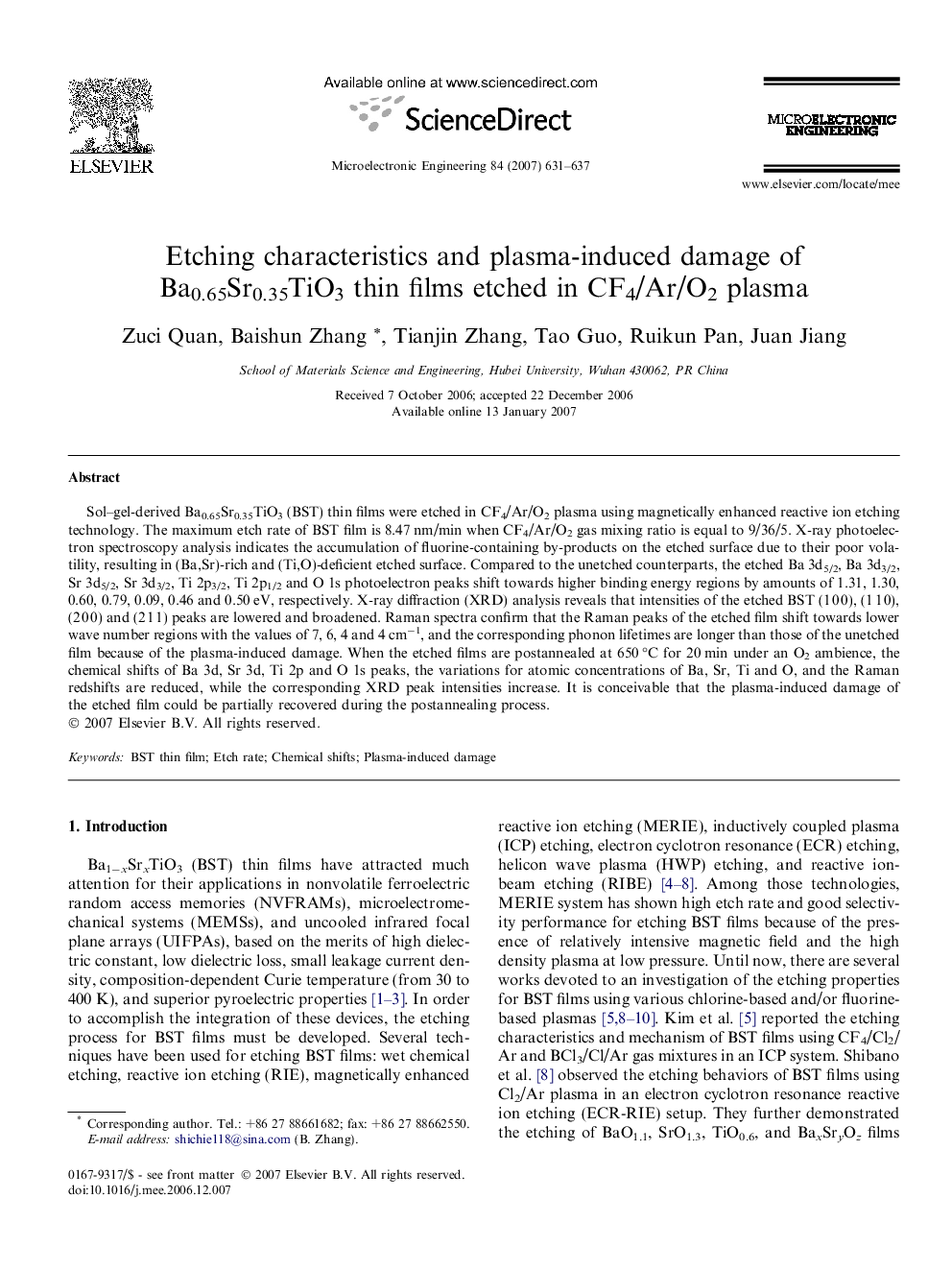| Article ID | Journal | Published Year | Pages | File Type |
|---|---|---|---|---|
| 545130 | Microelectronic Engineering | 2007 | 7 Pages |
Sol–gel-derived Ba0.65Sr0.35TiO3 (BST) thin films were etched in CF4/Ar/O2 plasma using magnetically enhanced reactive ion etching technology. The maximum etch rate of BST film is 8.47 nm/min when CF4/Ar/O2 gas mixing ratio is equal to 9/36/5. X-ray photoelectron spectroscopy analysis indicates the accumulation of fluorine-containing by-products on the etched surface due to their poor volatility, resulting in (Ba,Sr)-rich and (Ti,O)-deficient etched surface. Compared to the unetched counterparts, the etched Ba 3d5/2, Ba 3d3/2, Sr 3d5/2, Sr 3d3/2, Ti 2p3/2, Ti 2p1/2 and O 1s photoelectron peaks shift towards higher binding energy regions by amounts of 1.31, 1.30, 0.60, 0.79, 0.09, 0.46 and 0.50 eV, respectively. X-ray diffraction (XRD) analysis reveals that intensities of the etched BST (1 0 0), (1 1 0), (2 0 0) and (2 1 1) peaks are lowered and broadened. Raman spectra confirm that the Raman peaks of the etched film shift towards lower wave number regions with the values of 7, 6, 4 and 4 cm−1, and the corresponding phonon lifetimes are longer than those of the unetched film because of the plasma-induced damage. When the etched films are postannealed at 650 °C for 20 min under an O2 ambience, the chemical shifts of Ba 3d, Sr 3d, Ti 2p and O 1s peaks, the variations for atomic concentrations of Ba, Sr, Ti and O, and the Raman redshifts are reduced, while the corresponding XRD peak intensities increase. It is conceivable that the plasma-induced damage of the etched film could be partially recovered during the postannealing process.
